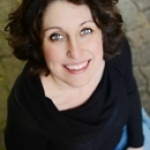
Doug Israel
A New Era for Arts in New York City Schools?
Posted by Feb 26, 2014

Doug Israel
Over the course of the past several years, big cities such as Chicago, Los Angeles and Seattle have been advancing ambitious plans to expand access to arts education and creative learning for public school students. Here in New York City – home of the nation’s largest school district – with a new mayor and schools chancellor, and a growing chorus of parents calling for the inclusion of arts in the school day, there is momentum gathering that could lead to a much-overdue expansion of arts and music in city schools.
This December, at the close of his 12 years in office, New York City’s former Mayor Michael Bloomberg signed into law a City Council bill that would require the Department of Education to provide annual data on arts instruction that advocates believe will help identify gaps in the delivery of arts education and drive improvements in what is being offered at schools across the city.
While strides were made in expanding access to arts instruction at many schools across the city over the past decade, large gaps persist in the provision of music, dance, theater and visual arts in the over 1,800 New York City public schools.
That is why on the heels of the successful effort to pass the arts reporting legislation, advocates and leaders from a diverse cross section of New York, released a statement calling on the city to ensure that every child, in every part of the city, receives arts instruction as part of their K-12 education.
The statement – entitled “Every Child in Every School: A Vision for Arts and Creativity in New York City Public Schools” –notes that New York City – with its rich and diverse array of arts and cultural experiences and organizations – is uniquely positioned to be the leader in arts and creative education.
Read More














